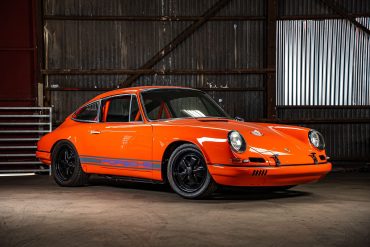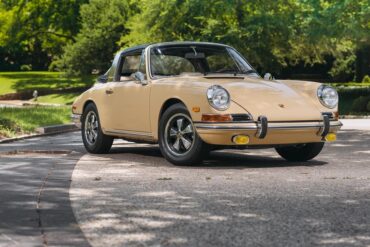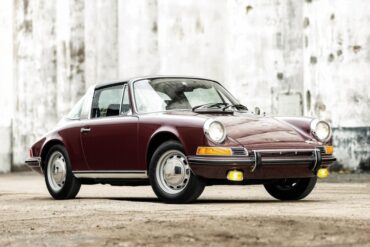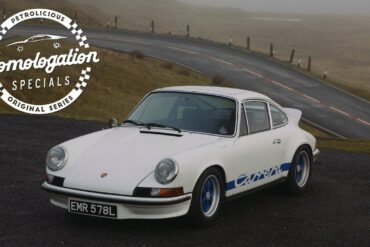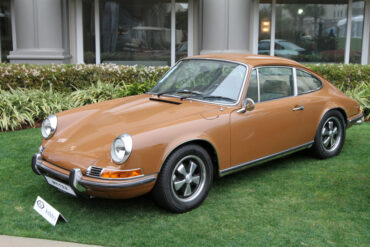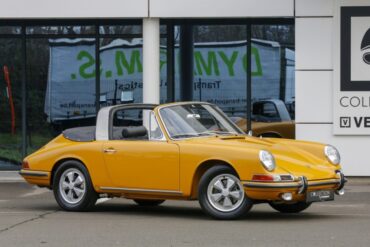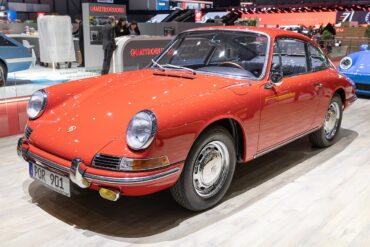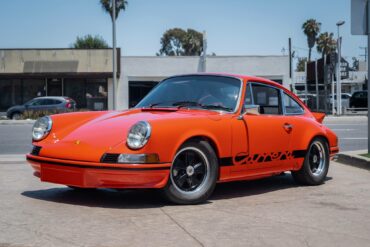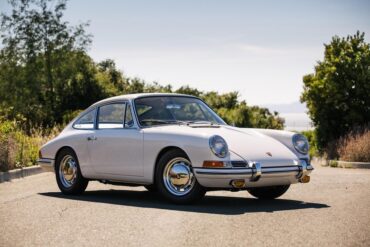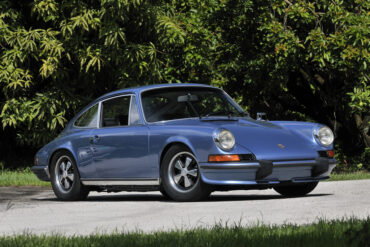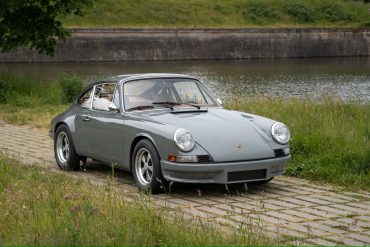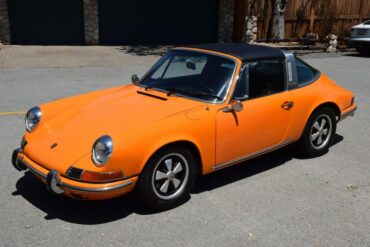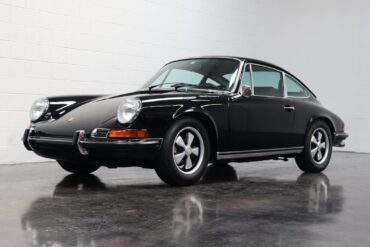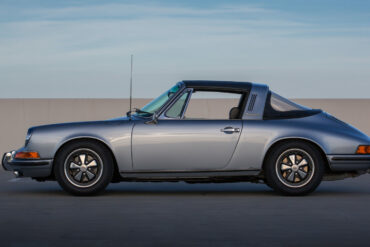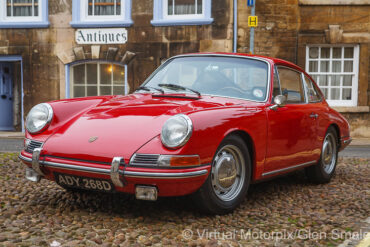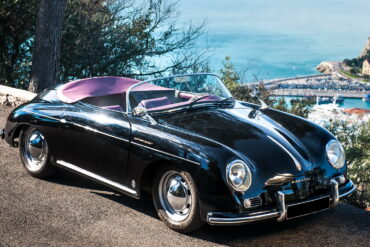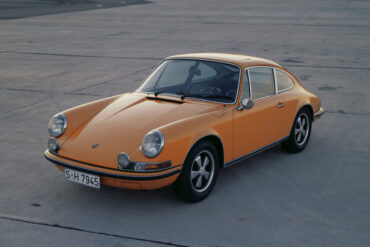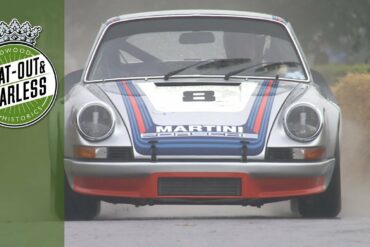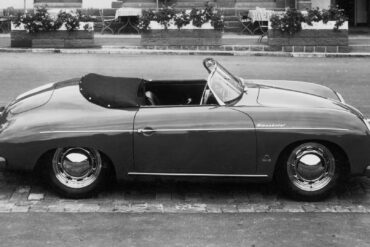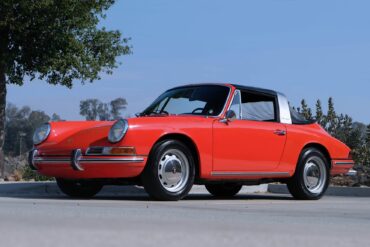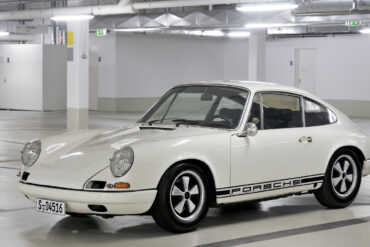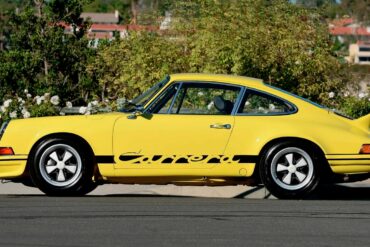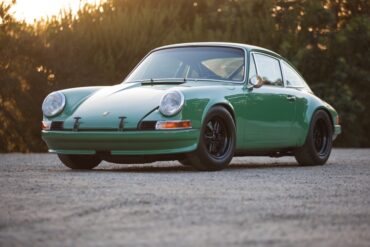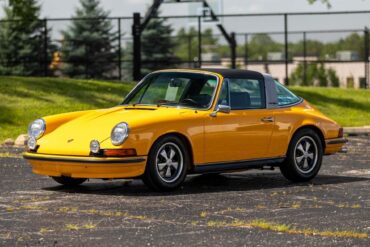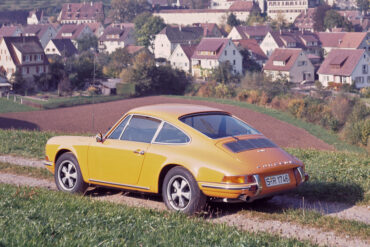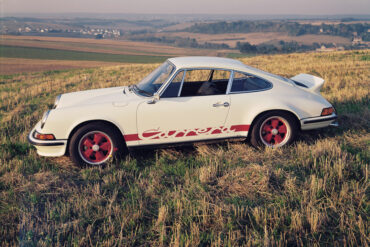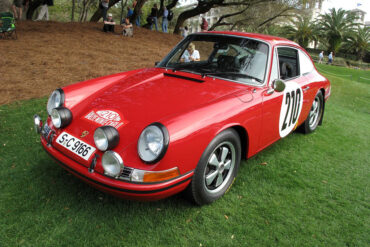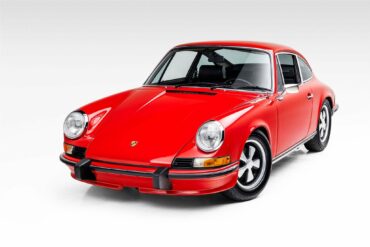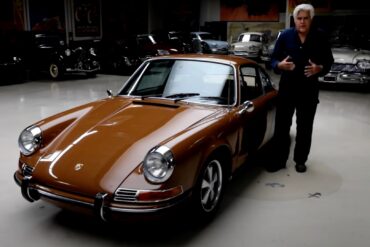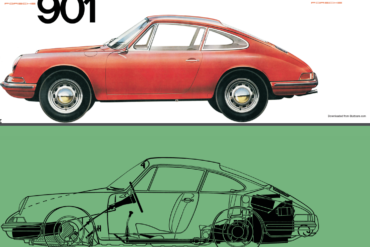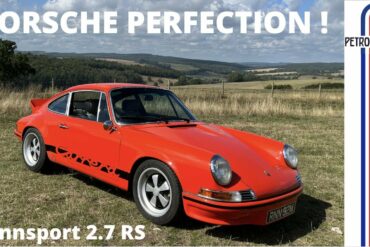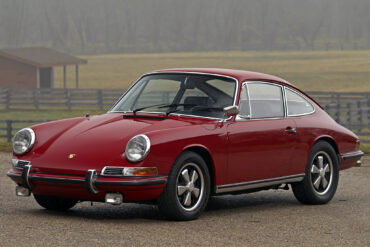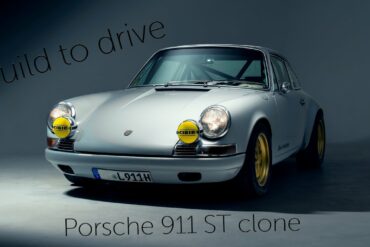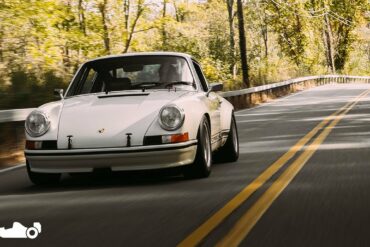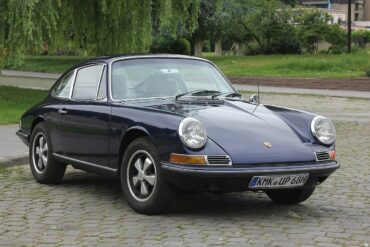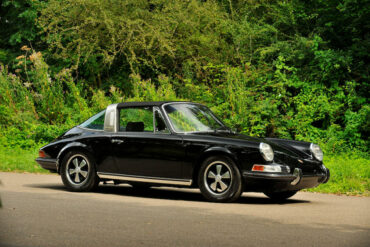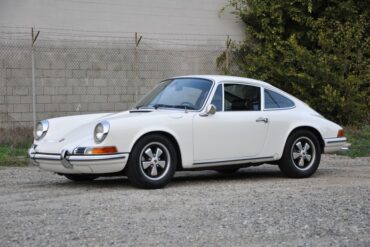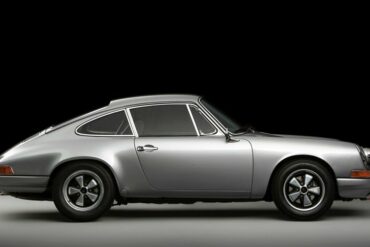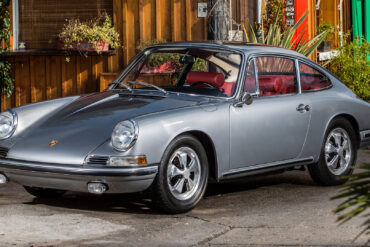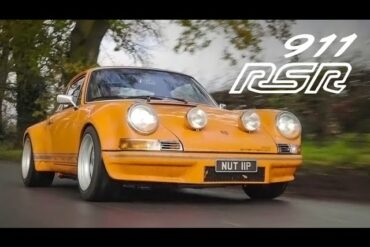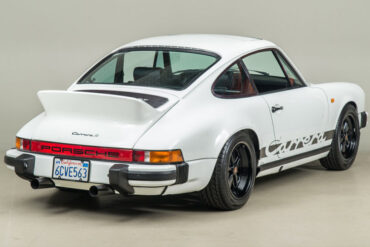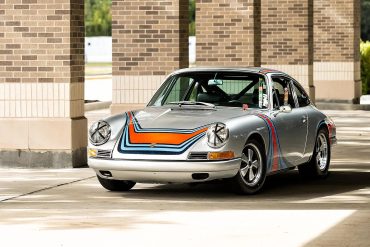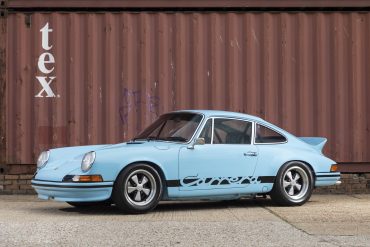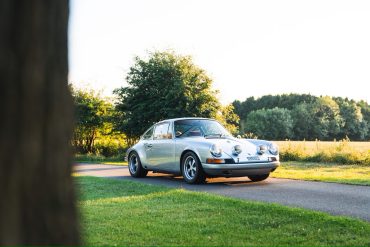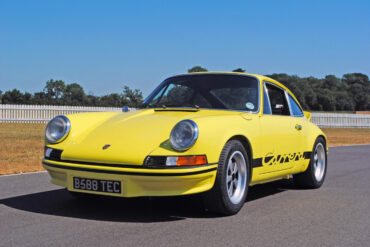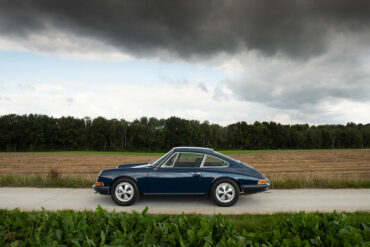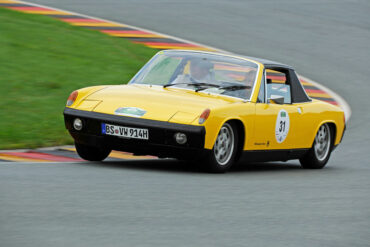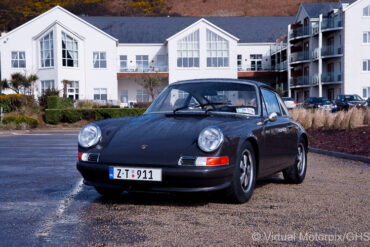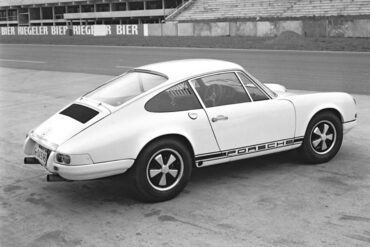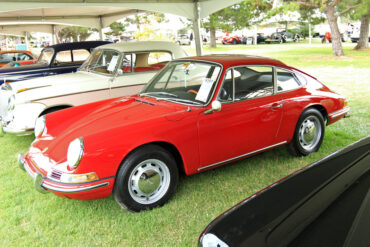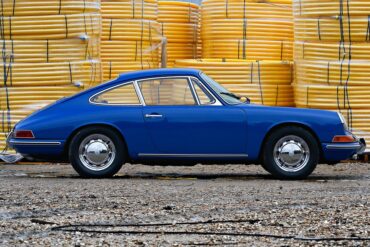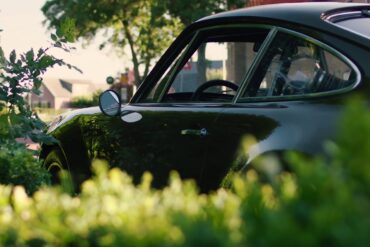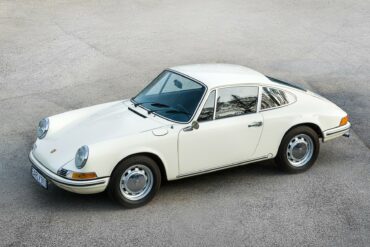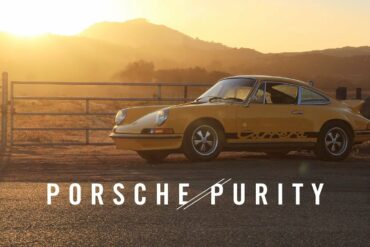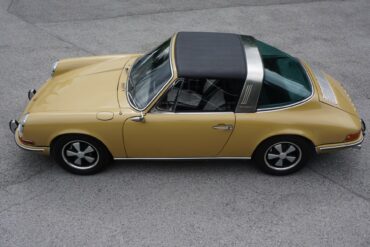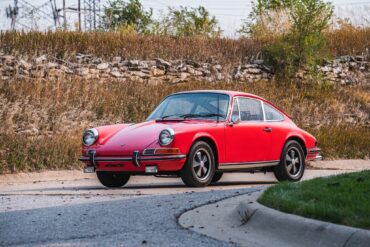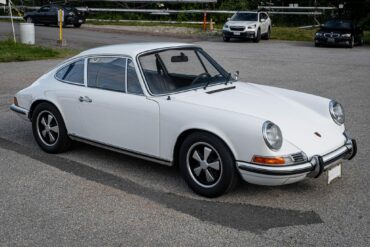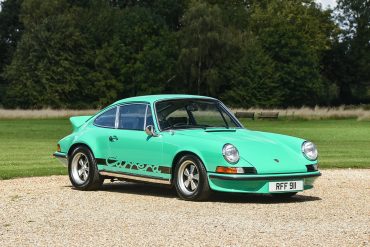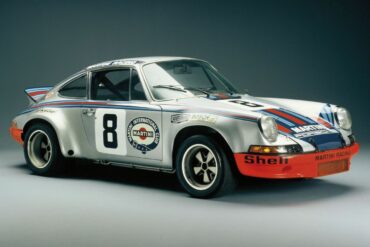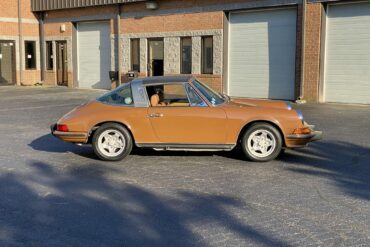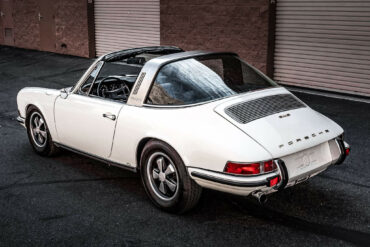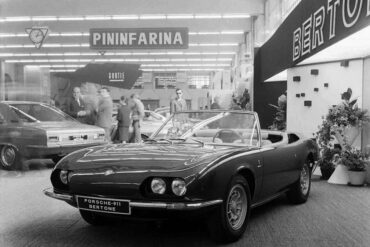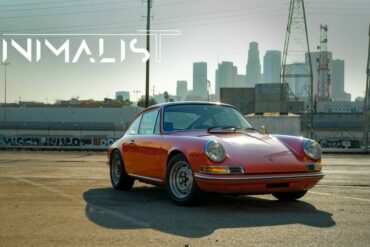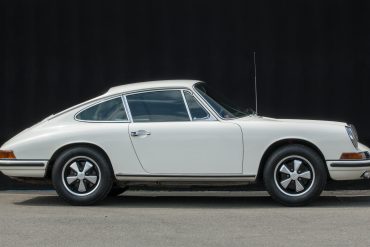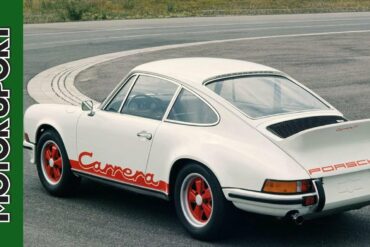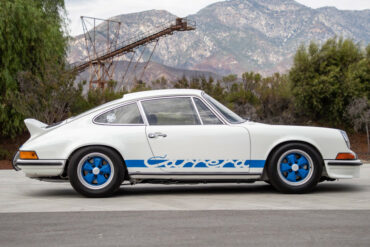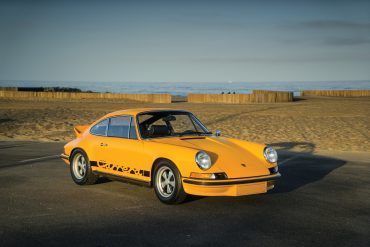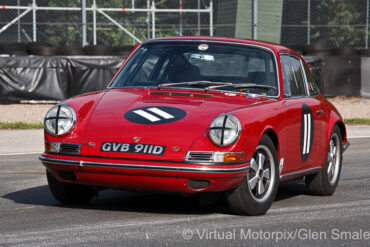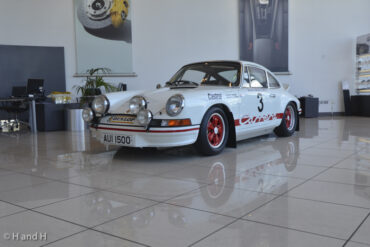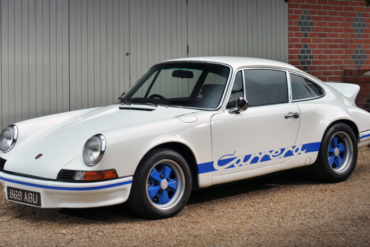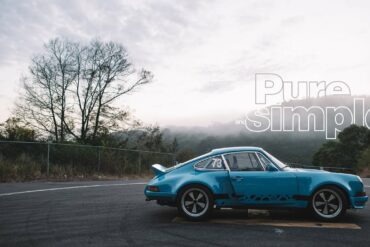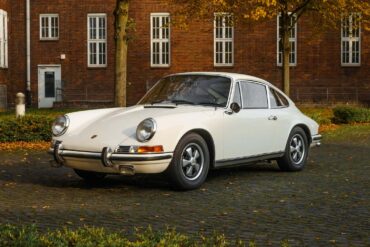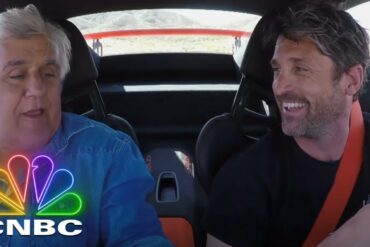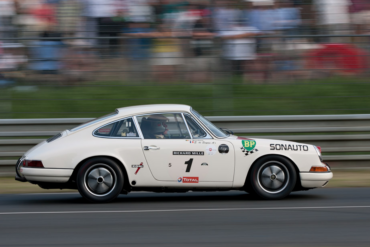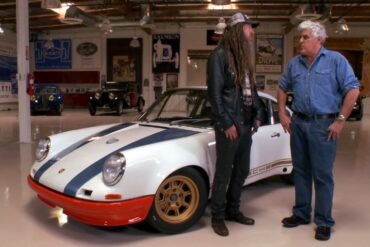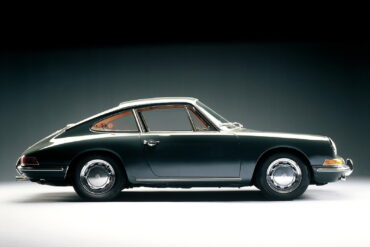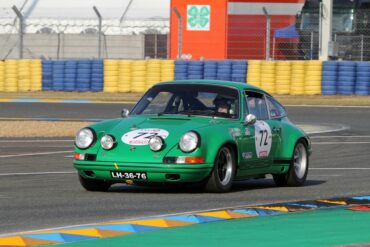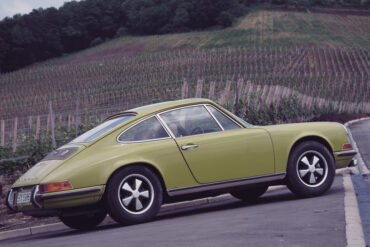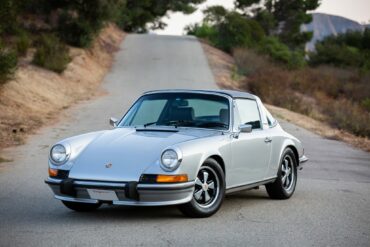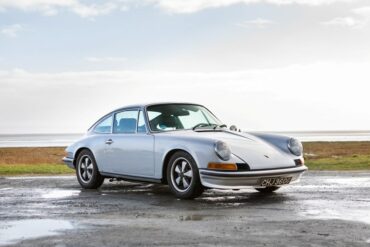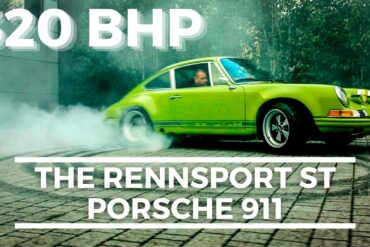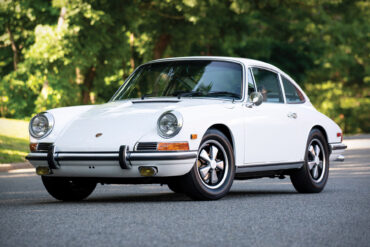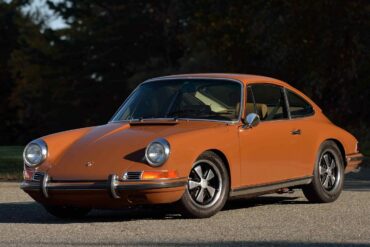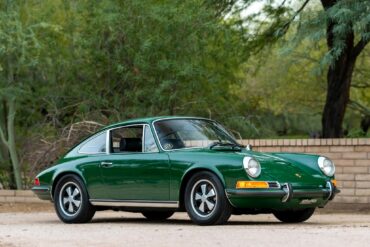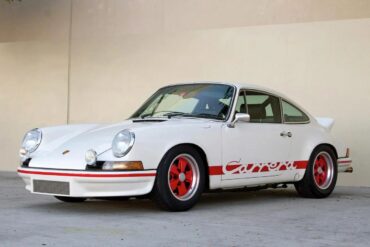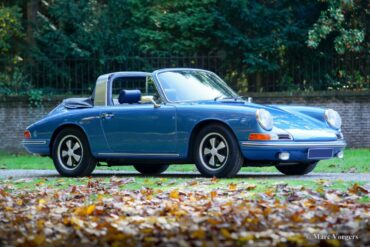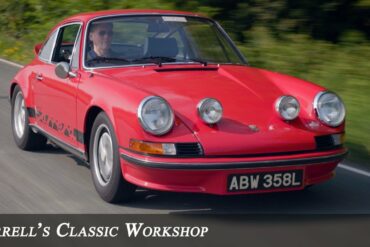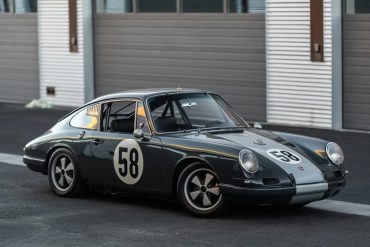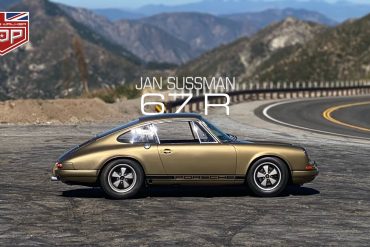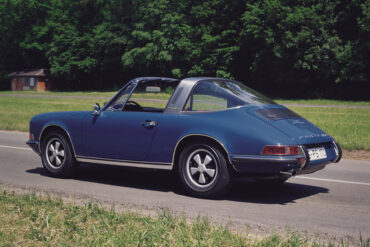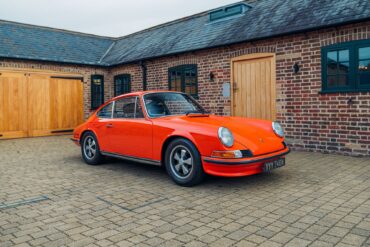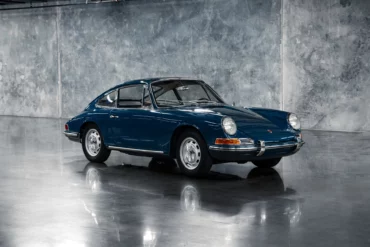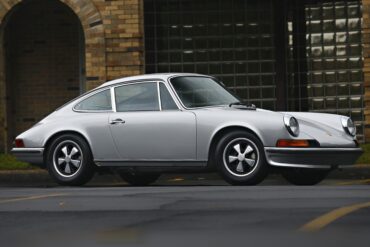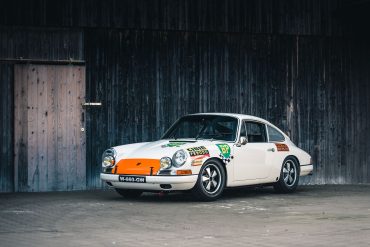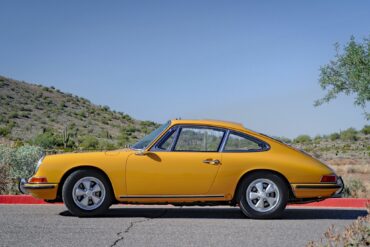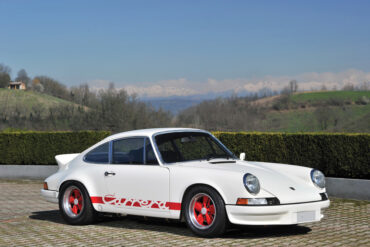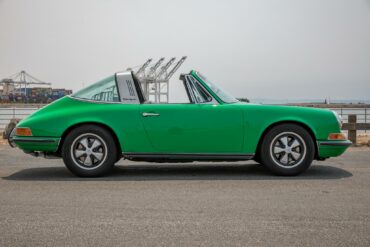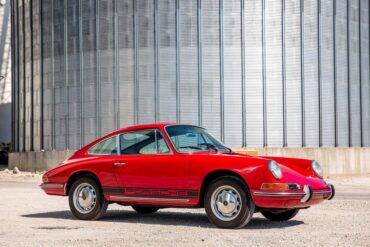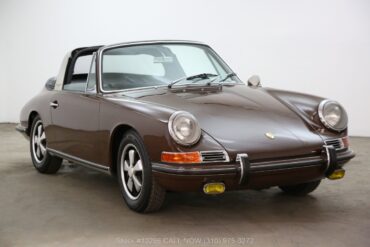This 1968 Porsche 911L Coupe, refinished in its original Tangerine color by SOS Customz in Oceanside, CA, received numerous modifications....
1967 – 1968 Porsche 911 Targa Technical Specifications Type Series Production Car Built At Germany Body Stylist Ferdinand Engine Flat-6...
1970 – 1971 Porsche 911 T 2.2 Targa (LWB) Pictures & Gallery ...
On The Road In an automotive world in which long legacies of high-performance are continually trotted out and watered down...
1970 – 1971 Porsche 911 T 2.2 Coupe (LWB) Pictures & Gallery...
1967 – 1968 Porsche 911 S Targa 2.0 (SWB) Technical Specifications Engine Type Flat 6 Induction Normally-aspirated Cooling Air/oil-cooled Valvetrain...
1963 – 1964 Porsche 901 Technical Specifications Built At Germany Body Stylist Ferdinand Engine Flat-6 Position Rear, Longitudinal Aspiration Natural...
1973 Porsche 911 Carrera RS 2.7 Lightweight Pictures & Gallery...
The first generation of the Porsche 911 begins in late 1964 and goes through 1968. The "base" model was an instant hit. During this period, Porsche would make continuous improvements and tweaks to the body, to its short wheelbase (SWB) chassis, and to its 2.0 liter flat six engine. Model year 1968 would be the last for the early 911, a transition that would begin with the introduction of the higher output 911S in 1967, followed by the 911L and a new entry level 911T in 1968, and finally, the 911E in 1969. The base 911 was available as both a Coupe and Targa (starting in '67).
The final early 911S befitted from Porsche's 2.4-liter engine the the long-wheel-base body. As such it is one of the final classic 911s before the 2.7 came out in 1973. Visually, the 2.4 range received a new chin on the front valence that was standard on the 911S and optional for the rest of the range. The S model had slight larger 6Jx15 Fuchs alloy wheels over the other models. The final early 911S benefitted from Porsche's 2.4-liter engine the the long-wheel-base body
This 1971 Porsche 911 T Lightweight ‘Outlaw’ is a stunning classic sports car that has been tastefully ‘resto-modded’ with various...
1970 – 1971 Porsche 911 T Targa 2.2 (LWB) Technical Specifications Induction Normally-aspirated Cooling Air/oil-cooled Valvetrain Single overhead camshaft Injection...
Porsche Option Codes – Porsche 911 (1971 Model Year) Looking to decode your 1971 Porsche 911 option codes? Want to...
1969 Porsche 911 E Targa 2.0 (LWB) Pictures & Gallery ...
Porsche Option Codes – Pre 1970 (356, 550, 904, 911, 912) Looking to decode your pre-1970 Porsche option codes? Want...
1970 Porsche 911 S 2.2 Coupé Along with all the C-series improvments to the 911 line, the 1970 Porsche 911...
On Board Hot off the heels of the unveiling of the new Porsche 911 RSR, we’re looking back with the...
Porsche Classic Accessories Catalogs (1950 – 1998 Model Year) These official Porsche PET Diagrams and codes for the current Porsche...
1968 – 1969 Porsche 911 T Targa 2.0 (SWB & LWB) Technical Specifications Engine Type Flat 6 Induction Normally-aspirated Cooling...
1967 Porsche 911 R Technical Specifications Type Racing Car Built At Germany Production 20 Engine Type 901/22 Flat-6 Position Rear...
In less than two weeks Monterey 2022 will start and one of the main attractions is a 1973 Porsche 911...
A Beautiful Outlaw 71 Porsche 911T Hotrod in Leaf Green – 3.4L from Mirage International – 270hp – fully rebuilt...
Porsche 911 (F-Body) Production & Chassis Numbers (1964 – 1969) ...
The Porsche 911T continued as the entry level 911 for the 1970 and 1971 model years, sitting below the 2.2L 911 E and the 2.2 L 911 S. The 911 T featured all the upgrades that came with C-Series production updates including longer wheelbase and Fuchs alloy wheels. During its production years it was available as both a Coupe or Targa bodystyle. As with the E and S variants, Porsche would upgrade the 911T to a larger 2.2 liter engine.
Revealed at the 1972 Paris Auto Show, the Carrera 2.7 RS was a special model used to homologate the 911 in Group 4 racing. Developed from the 911S, the 2.7 was more potent in almost every area. Compared to the standard Carrera, the 2.7 RS featured a larger engine, wider flares to accommodate the Fuchs alloy wheels, stiffened suspension, larger brakes and a ducktail rear spoiler. The Touring outsold the Lightweight, with a total of 1380 units built (the Lightweight had only 200 units).
1968 – 1969 Porsche 911 T Coupe 2.0 (SWB & LWB) Pictures & Gallery...
European Collectibles is proud to present a 1973 Porsche 911E Coupe that is one of the 1,366 911E Coupes produced...
On The Road You’ve followed this Porsche 911 T in the Restoration Blogs, now see and hear this modified boxer...
Porsche 911 Sales Brochures (1st Generation) Clearly going back this far, sales catalogs for Porsche cars are hard to find....
Real World Carrera RS Review The 2.7 Carrera RS debuted in October 1972 at the Paris Motor Show, and was...
The 911 S was introduced to increase the performance potential of the very successful 911. It had a more powerful...
Clean & Fast 911 ST Clone Karsten has build his Porsche the way he wanted it. Clean an fast, like...
A Porsche 911 S/T Restomod James talks about how his German-market Porsche 911 came to be a 911 ST recreation....
1965 – 1969 Porsche 912 Technical Specifications Base Price in U.S. Dollars 1965: (European Delivery Only) 1966: $4,700.00 1967: $4,790.00...
1970 – 1971 Porsche 911 E Targa 2.2 (LWB) Technical Specifications Induction Normally-aspirated Cooling Air/oil-cooled Valvetrain Single overhead camshaft Injection...
Porsche 911 & 912 Spare Parts Catalogs (1965 – 1973 Model Year) These official Porsche PET Diagrams and codes for...
Porsche 911 (F-Body) Paint Color Options This post outlines all the color options for the original F-Body (Classic) generation Porsche...
Porsche 911 (Classic) Technical Specifications & Model Comparison (European Variants) Comparison: European specs 911 2.2 Comparison: European specs 911 2.4...
Sublime Or Sacrilege? ‘If you want to build something, build it how you want it.’...
1965 – 1989 Porsche VIN Numbers Porsche used a variety of chassis and VIN numbering systems until 1981, when a...
Introduced in 1966 to enhance the performance capabilities of the already successful 911, the 911 S boasted a more powerful...
Of all the 1580 Carrera RS 2.7s, only 200 were made were ordered with this lightweight ‘Sports’ trim which made...
This 1972 Porsche 911 ‘Special’ is a custom creation inspired by the early 1970s S/T model by Tuthill Porsche. Beneath...
1973 Porsche 911 Carrera RS 2.7 Touring Pictures & Gallery ...
1967 – 1968 Porsche 911 S Coupe 2.0 (SWB) Technical Specifications Engine Type Flat 6 Induction Normally-aspirated Cooling Air/oil-cooled Valvetrain...
Porsche Exchange & Replacement Parts (1963 – 2012 Model Year) These official Porsche PET Diagrams and codes for the current...
Based on the 911S, the 911 R was produced by Porsche to compete in the FIA’s GT 2.0 category. To make it competitive, the 911R was powered by a flat-six engine, Type 901/22 from the Porsche 906, capable of 210 hp. It went on a diet too, with weight savings coming from everywhere, getting the 911 R down to just 1,800 pounds dry. Four prototypes were constructed after which Porsche had coachbuilder Karl Baur build another 20 customer cars. In the end, because of the modifications to the 911R, the FIA refused to homologate the car.
1965 – 1969 Porsche 912 Pictures & Gallery...
1965 – 1968 Porsche 911 Pictures & Gallery...
One Man’s Perfect 911 Short movie about my Porsche 1969 912 that was turned into my dream hot rod 911...
1968 – 1969 Porsche 911 T Coupe 2.0 (SWB & LWB) Technical Specifications Engine Type Flat 6 Induction Normally-aspirated Cooling...
Perfectly Describing the Magic of the 911 2.7 RS Respected architect Jonathan Segal poetically describes what the 1973 Porsche 911 2.7L...
1969 Porsche 911 E Targa 2.0 (LWB) Technical Specifications Engine Type Flat 6 Induction Normally-aspirated Cooling Air/oil-cooled Valvetrain Single overhead...
The Porsche 911 E was designed to fall nicely between the 911 T touring model and the top of range high-performance 911S. The Porsche 911 T would continue for its second year in Europe, and newly introduced into the United States market, as the entry level offering for the 911, sitting below the 1969 911E and the 1969 911S. The 1969 911E was powered by engine Type 901/09 (Type 901/11 with Sportomatic) featuring mechanical fuel injection (MFI). The 2.0 L Aircooled Flat 6 was good for 140 bhp at 6500 rpm.
1970 – 1971 Porsche 911 E Coupe 2.2 (LWB) Technical Specifications Induction Normally-aspirated Cooling Air/oil-cooled Valvetrain Single overhead camshaft Injection...
Revealed at the 1972 Paris Auto Show, the Carrera 2.7 RS was a special model used to homologate the 911...
Introduced in 1973, the RSR was a factory-built racing car based on the 911 chassis. The Porsche 911 Carrera RSR 2.8 was the first 911 to ever wear the RSR badge. Homologated for racing by the iconic 1973 Porsche 911 Carrera RS, the RSR’s racing career got off to the perfect start thanks to Brumos Racing’s overall triumph in the 1973 24 Hours of Daytona, while a factory car won the latest ever Targa Florio road race. For the privateer in the mid-1970s who wanted to go sports car racing this was the chosen weapon.
1972 – 1973 Porsche 911 E 2.4 Targa (LWB) Pictures & Gallery...
1970 – 1971 Porsche 911 E Targa 2.2 (LWB) Technical Specifications Induction Normally-aspirated Cooling Air/oil-cooled Valvetrain Single overhead camshaft Injection...
Southern California Porsche dealer Johnny von Neumann knew what his customers wanted, and a Targa top Targa 911 wasn’t it. With Porsche’s approval, he hired designer Nuccio Bertone to create a one-off 1966 Porsche 911 Spyder, in hopes of launching low-volume production. Just one example was constructed. The engine incorporated a vertically-mounted cooling fan, a 9.1:1 compression ratio and two triple-choke 40PI Solex carburettors. Peak output was 130bhp at 6100rpm and 174lb-ft at 4200rpm. Transmission was via a Type 901 five-speed gearbox and single-plate clutch.
1969 Porsche 911 T Owner Story The 911 T was the most stripped-down model in the range, and arguably the...
1968 Porsche 911 L Coupe 2.0 (SWB) Technical Specifications Type Series Production Car Model Years 1968 Built At Germany Body...
The Story Behind the 2.7 RS The 2.7 RS was the first 911 to carry the Carrera badge, this is...
Porsche Option Codes – Porsche 911 (1973 Model Year) Looking to decode your 1973 Porsche 911 option codes? Want to...
Revealed at the 1972 Paris Auto Show, the Carrera 2.7 RS was a special model used to homologate the 911 in Group...
1966 Porsche 911 2.0-litre – GVB 911D – parked on track at Lodge Corner after practice for the Oulton Park...
Porsche 911 Carrera RS Sport Lightweight ‘AUI 1500’ as it is today The Porsche 911 Carrera RS 2.7 broke cover...
Porsche 911 Carrera RS 2.7 1973 Porsche 911 Carrera RS 2.7 Engine: 2,687 cc, air-cooled horizontally flat six Production dates:...
A Unique Tribute From its humble beginnings, this 1970 911 enjoyed a varied life, most notably as a rather tasty...
1970 – 1971 Porsche 911 E Coupe 2.2 (LWB) Technical Specifications Induction Normally-aspirated Cooling Air/oil-cooled Valvetrain Single overhead camshaft Injection...
Driving A Legend Patrick Dempsey and Jay Leno take a joy ride in a 1973 Porsche Carrera RS 2.7. With...
1968 Porsche 911 TR Technical Specifications Configuration Type 901/22 B6 Location Rear, longitudinally mounted Construction aluminium block and head Displacement...
Porsche 911 (1963 – 1973) Story & History F-Body – The 1st Generation Porsche 911 Premiere: 1963 September 12 at...
1971 Porsche 911 S/T Pictures & Gallery...
The Porsche 911E continued as the midrange 911 for the 1970 and 1971 model years, fitting between the contemporaneous 2.2L 911T and the 2.2L 911S. It produced 155 bhp and featured all the upgrades that came with C-Series production including longer wheelbase, Fuchs alloy wheels. Both the E and S model 911 had an aluminium engine-lid and aluminium bumpers. The 911 E 2.2 was once again available as either a Coupe or Targa body. For model year 1972, the 2.2L 911E was replaced by the 2.4L 911E.
1972 – 1973 Porsche 911 S 2.4 Targa (LWB) Pictures & Gallery...
In 1966 the beefier 160hp 911S was introduced as the first variation of the 911. The "S" which stood for "Super" boasted performance upgrades and modifications that included larger valves, a higher compression ratio, better porting and larger carburetor jets. Along with the mechanical tweaks, the 911S also received chassis upgrades in the form of a rear anti-roll bar, Koni shocks, distinctive 5-spoke Fuchs alloy wheels and ventilated disc brakes on all four corners to replace the solid discs.
A Porsche 911 S/T Restomod Darryl Sleath investigates the Rennsport Porsche 911 ST – a 320 bhp Porsche 911 that’s...
1968 Porsche 911 L Coupe 2.0 (SWB) Pictures & Gallery...
Porsche Option Codes – Porsche 911 (1970 Model Year) Looking to decode your 1970 Porsche 911 option codes? Want to...
1970 – 1971 Porsche 911 E 2.2 Coupe (LWB) Pictures & Gallery ...
This particular 1973 Porsche 911 Carrera RS is a genuine M472 Touring model that was originally manufactured for the German...
1968 Porsche 911 L Targa 2.0 (SWB) Pictures & Gallery ...
The 911 Porsche feared no-one would buy! In this episode we bring you a rather special car, one of the...
This 1967 Porsche 911S coupe was transformed into a 911R-inspired racer in 1991 by Gary and Rod Emory of Parts...
Based on the 911S, the 911 R was produced by Porsche to compete in the FIA’s GT 2.0 category. To...
1968 – 1969 Porsche 911 T Targa 2.0 (SWB & LWB) Pictures & Gallery...
1972 – 1973 Porsche 911 E Coupe 2.4 (LWB) Technical Specifications Induction Normally-aspirated Cooling Air/oil-cooled Valvetrain Single overhead camshaft Injection...
The first 912s were made in the spring of 1965, alongside the last of the 356s. Originally the 912 was...
1972 – 1973 Porsche 911 S 2.4 Coupe (LWB) Pictures & Gallery...
Thanks to the launch of its modern 911 R, the original Porsche 911R has been thrust firmly back into the limelight over the...
1970 – 1971 Porsche 911 T Coupe 2.2 (LWB) Technical Specifications Induction Normally-aspirated Cooling Air/oil-cooled Valvetrain Single overhead camshaft Injection...
Of all the 1580 Carrera RS 2.7s, only 200 were made were ordered with this lightweight ‘Sports’ trim which made the car more responsive and purposeful. In many ways these few cars were the ultimate road-going Porsche of the 1970s. Known as the Sports, Lightweight or even the M471 option code, these cars had improved the power-to-weight ratio. Reports of 75kg were stripped from the standard model by fitting lightweight body panels and lightweight glass.
1970 – 1971 Porsche 911 E 2.2 Targa (LWB) Pictures & Gallery ...
Put most simply, a 912 is essentially a 911-style body mated with a 356-derived 4-cylinder engine. The 356 was Porsche’s first mass-marketed sports car. The Porsche 911 is the most successful sports car of all time. the new 912 came equipped with 90HP motor was a slightly detuned version of the 95HP motor that had powered its predecessor, the 356SC. However, despite this reduction of power, and despite the 912 being a heavier car, it was actually faster than the 356SC thanks to more streamlined aerodynamics and a more advanced suspension system.
1968 Porsche 911 L Targa 2.0 (SWB) Technical Specifications Type Series Production Car Model Years 1968 Built At Germany Body...


